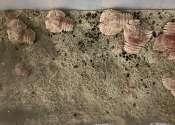Sea surface temperatures reach highest level in 150 years
Sea surface temperatures in the Northeast Shelf Large Marine Ecosystem during 2012 were the highest recorded in 150 years, according to the latest Ecosystem Advisory issued by NOAA's Northeast Fisheries Science Center (NEFSC). ...








